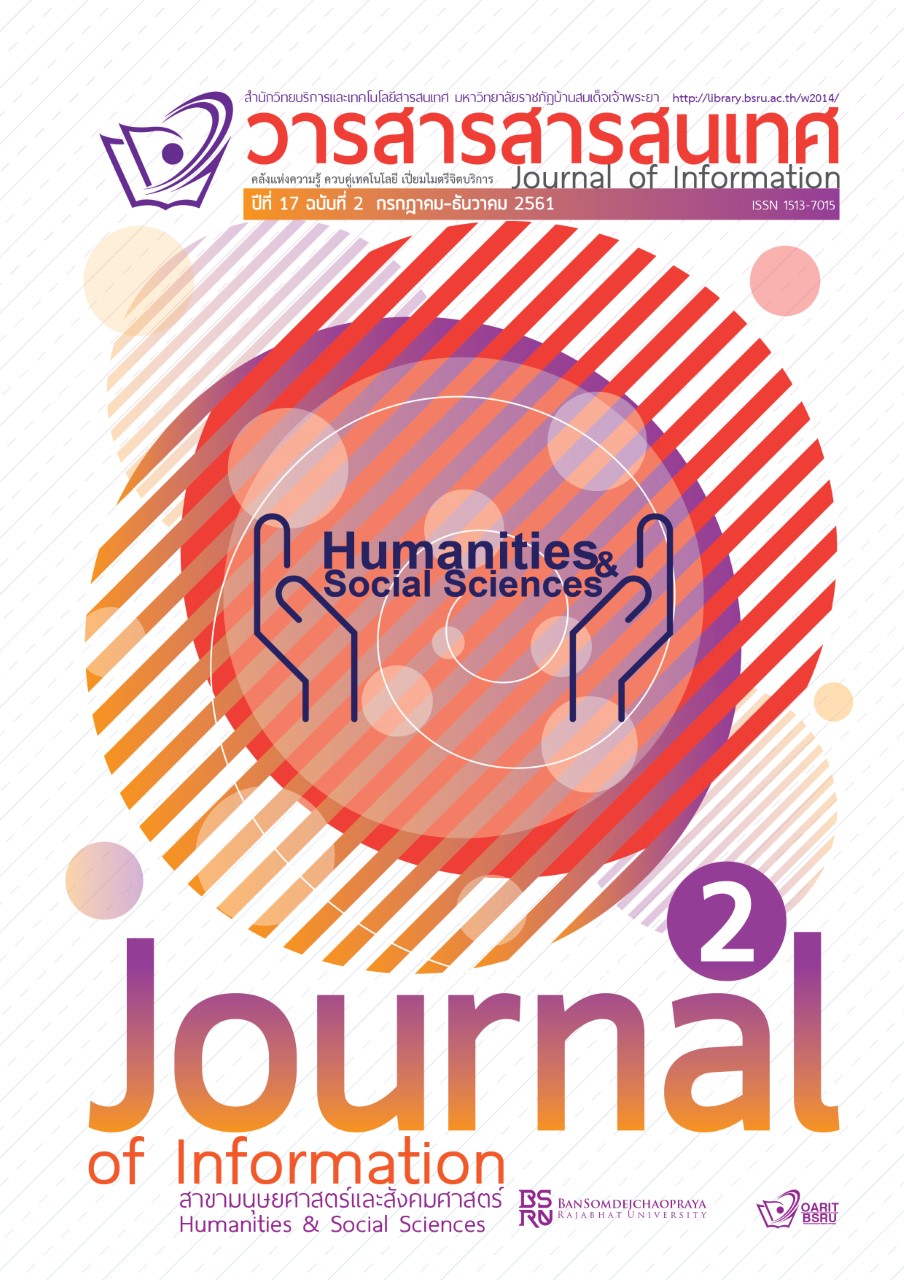Abstract Expressionism Painting with Lines and Colours: A Case Study of Cody Hooper’s Paintings between 2009–2015
Keywords:
Expressionism, Lines and Colours, Forms and Shapes, Cody HooperAbstract
Abstract
The purposes of this research were to 1) analyze abstract expressionism paintings of Cody Hooper between 2009-2015 in terms of colours, painting techniques, lines, and form and shapes and 2) apply the obtained analysis results to create abstract expressionism paintings with lines and colours with acrylic on canvas in the context of the present research. The sample included the paintings created by Cody Hooper. The research instruments involved Grid Table Analysis Form, structured observation checklist, structured interview, researcher’s paintings, and quality assessment form. Data were collected through Del-Phi Technique and were analyzed by percentage, mean, and content analysis.
The findings revealed the followings.
- After analyzing 10 paintings of Cody Hooper, the mostly used colours referred to grey, black, white, light yellow, brown, dark yellow, dark purple, navy blue, blue, and orange. The painting techniques included blending, impasto, using the ground, glazing, brushwork, and using masking tape. There were 3 lines used in the analyzed works, i.e., lines formed by edge, actual lines, and axis lines. Forms and shapes delineated free form, geometrical shape, and distorted square.
- Researcher applied the four aspects result obtened from ana lizing Cody Hooper’s artwork to create four paintings used as research tools for collecting data from the art experts through interview. Data collected were applied to create two paintings in the context of the researcher. A couple paintings were inspired by the scene of sunshine through the cloud and objects. Blending with an emphasis on black, grey, and white tone was used as well as lines formed by edge and actual lines. Also, free shape and geometrical shape were employed. These paintings reflected placidity, mystery, and power of hope. The specialists assessed them at the ‘Very Good’ level.
References
พีระพงษ์ กุลพิศาล. (2553). สูจิบัตรวิทยานิพนธ์ ทัศนศิลป์สร้างสรรค์ นักศึกษาปริญญาโท สาขาศิลปกรรม มหาวิทยาลัยราชภัฏบ้านสมเด็จเจ้าพระยา. กรุงเทพฯ: 2G Creation.
----------. (2556). ทัศนศิลป์ปริทรรศน์. กรุงเทพฯ: 2G Creation.
----------. (2557). หลักการแปลงรูปในทัศนศิลป์. กรุงเทพฯ: 2G Creation.
วิรุณ ตั้งเจริญ. (2535). ทฤษฎีสีเพื่อการสร้างสรรค์. กรุงเทพฯ: โอเดียนสโตร์.
สมชาย พรหมสุวรรณ. (2548). หลักการทัศนศิลป์. กรุงเทพฯ : จุฬาลงกรณ์มหาวิทยาลัย.
----------. (2559). เอกสารประกอบการสอนการวิจัย. กรุงเทพฯ: มหาวิทยาลัยราชภัฏบ้านสมเด็จเจ้าพระยา.
อารี สุทธิพันธุ์. (2528). ศิลปนิยม. กรุงเทพฯ: กระดาษสา.
Downloads
Published
How to Cite
Issue
Section
License
บทความ ข้อความ ภาพประกอบ และตารางประกอบที่ลงพิมพ์ในวารสารเป็นความคิดเห็นส่วนตัวของผู้นิพนธ์ กองบรรณาธิการไม่จำเป็นต้องเห็นตามเสมอไป และไม่มีส่วนรับผิดชอบใดๆ ถือเป็นความรับผิดชอบของผู้นิพนธ์เพียงผู้เดียว






